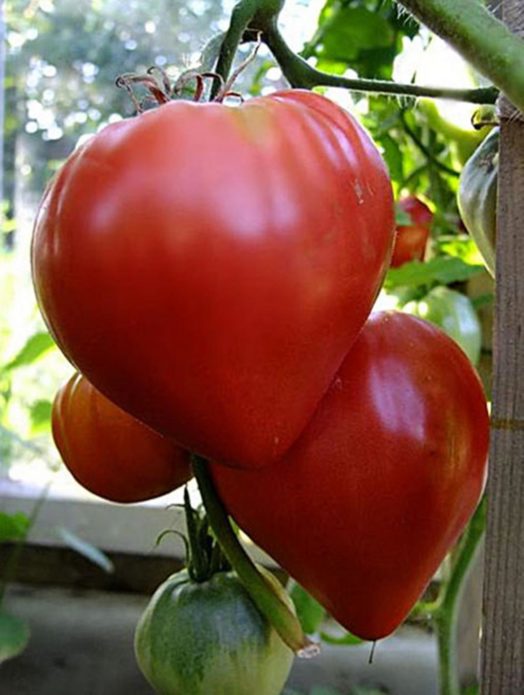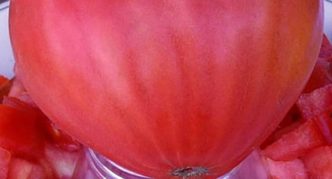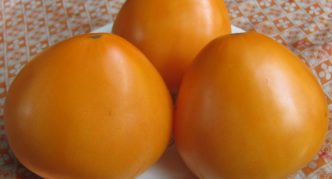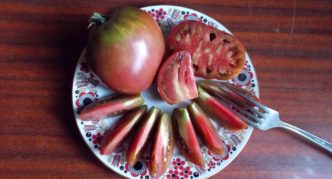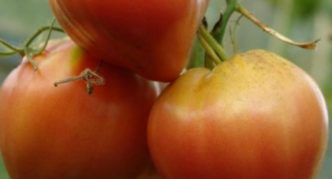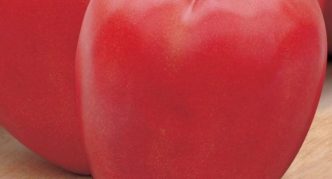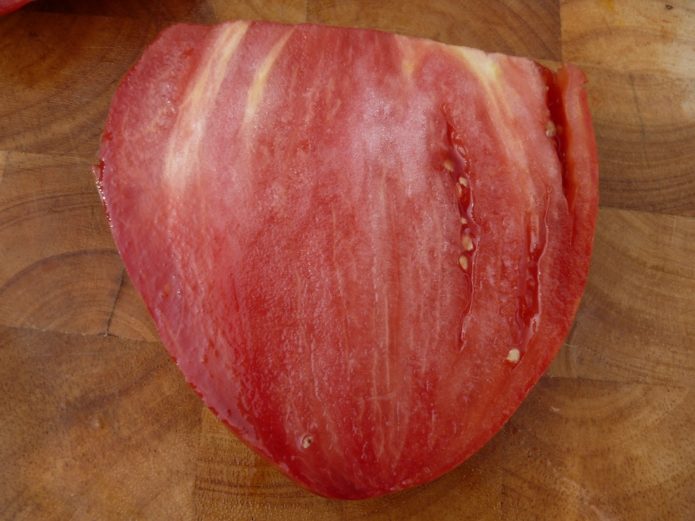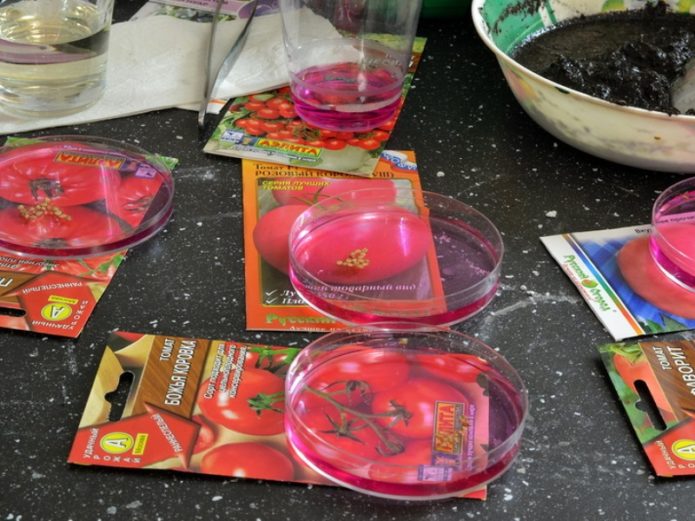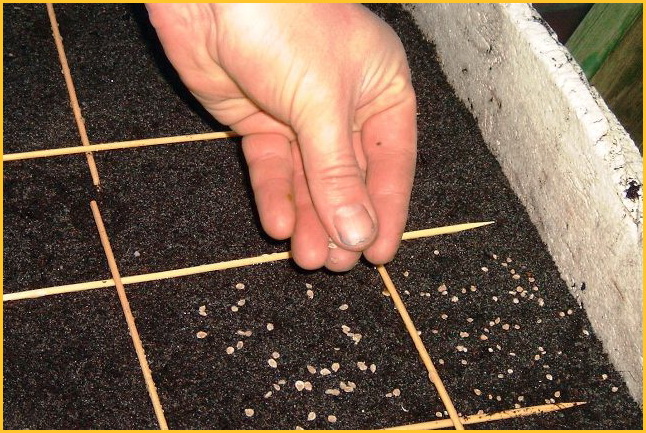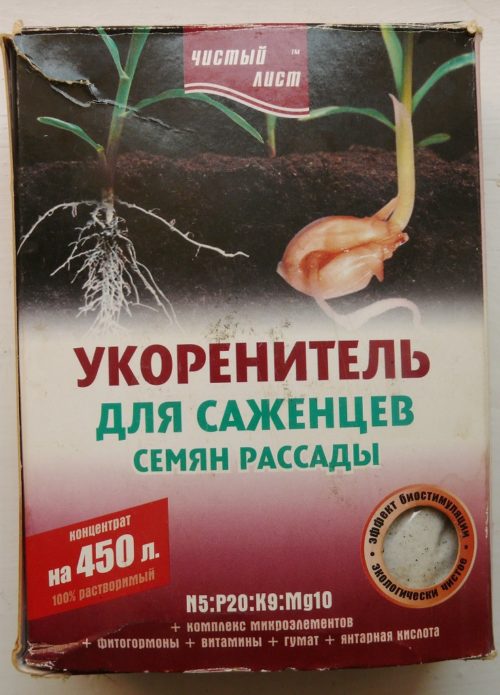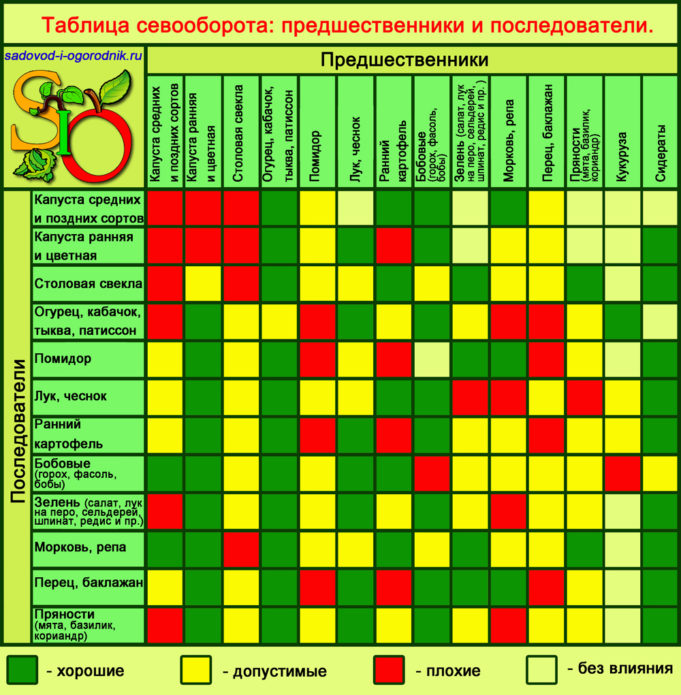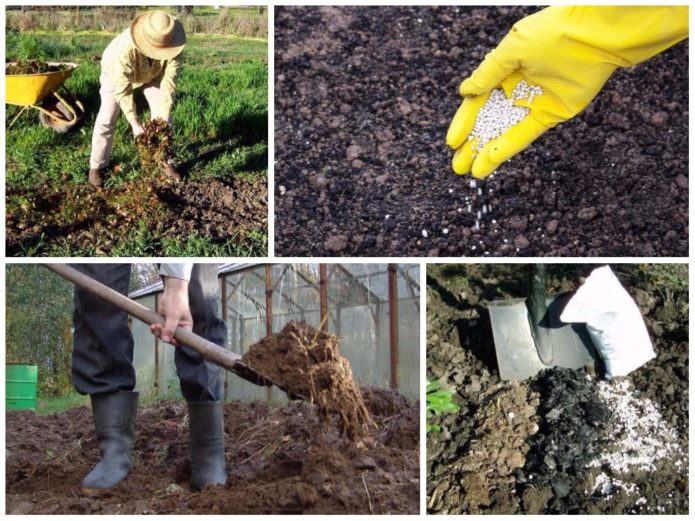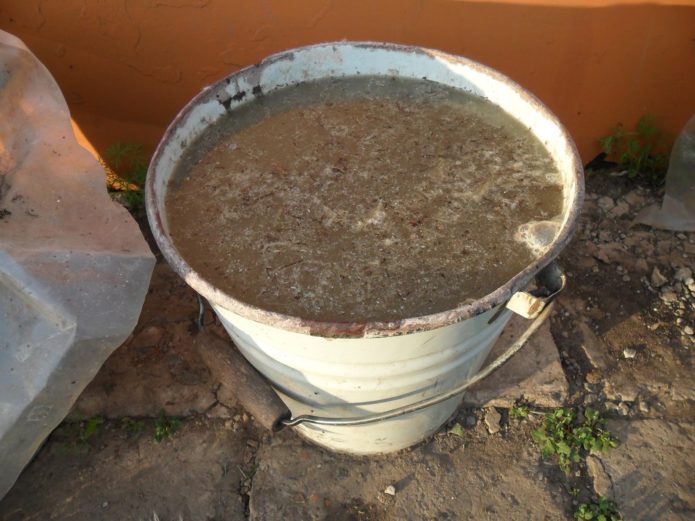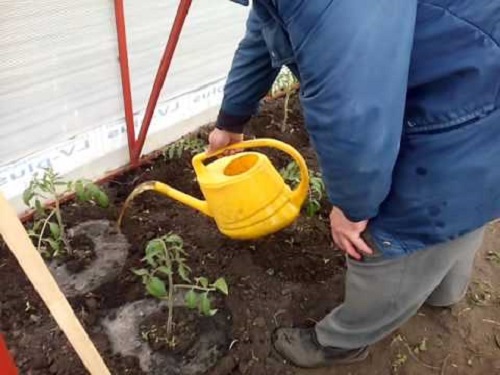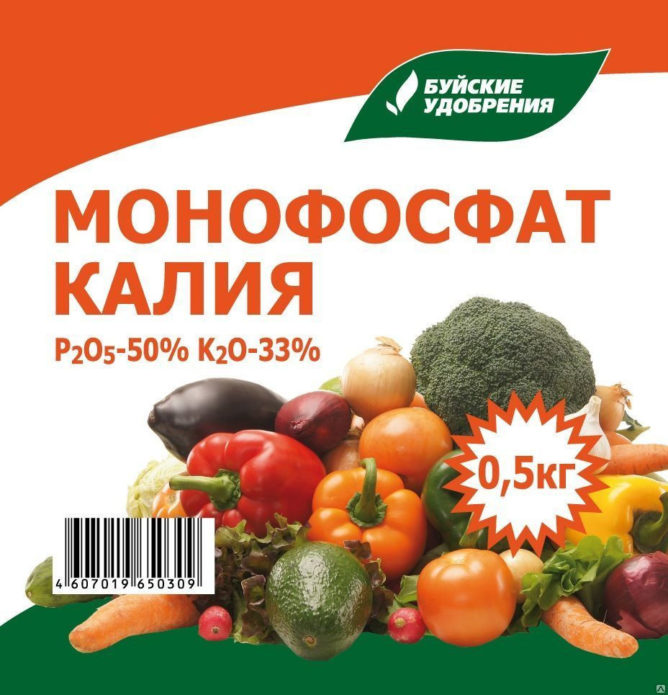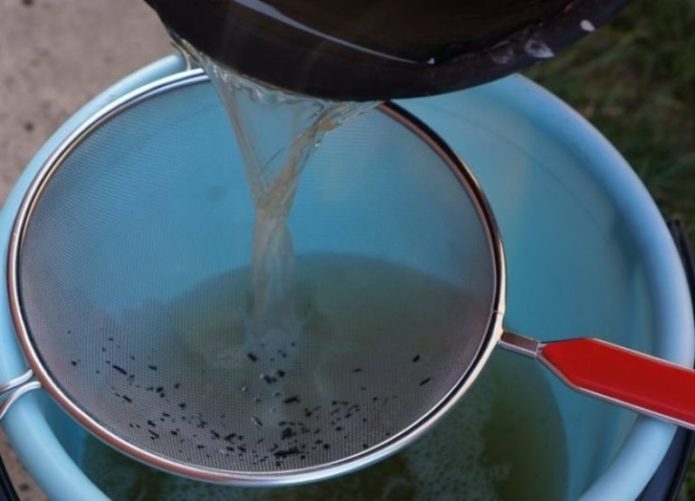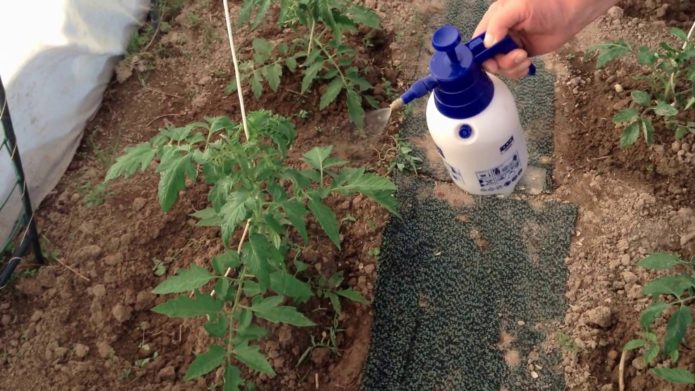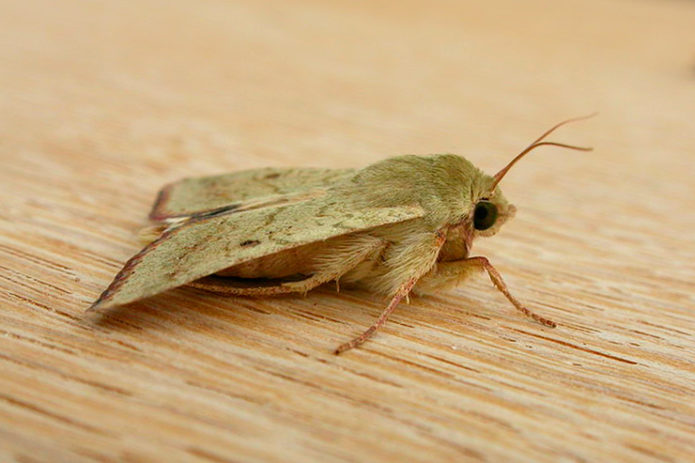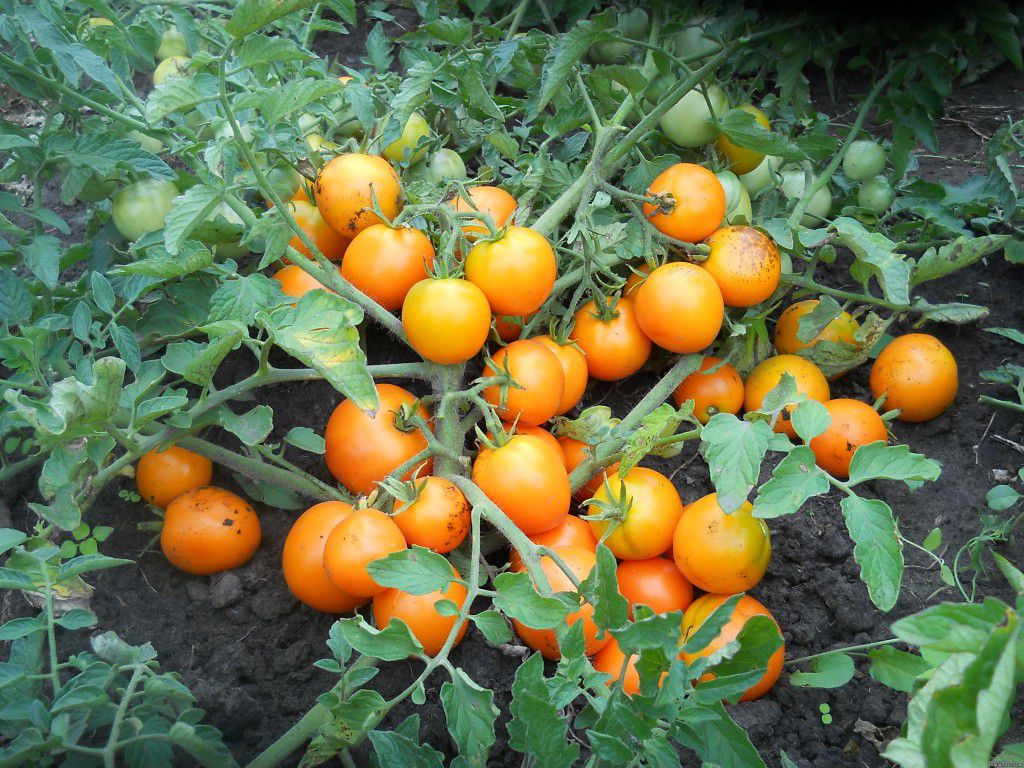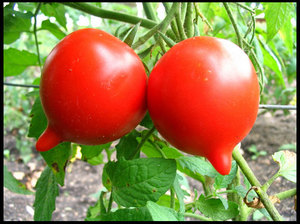Breeders annually surprise gardeners with outlandish tomato varieties. As a result, gardeners are increasing their plantations in order to test new products. However, there is an old variety, which is always allocated a special place in the garden, - the Ox heart. Everyone's favorite has remained in demand for many years thanks to its sweetness and perfect taste.
Content
Characteristics of Tomato Bovine Heart
Bovine heart is a late-ripening variety, grown both in greenhouses and in the open field. From germination to maturation, 120-130 days pass. The plant is indeterminate. The leaves are drooping, green, medium in size. The bush is spreading, in greenhouse conditions it reaches a height of 1.7 m. Forms simple inflorescences, the first flower cluster is laid above the 8-9th leaf.
The peculiarity of the variety is a heart-shaped red fruit with a raspberry shade. The pulp is pinkish, sweet, with a barely noticeable sourness. Unripe Bovine Heart tomatoes have pronounced dark green "shoulders" (as the people call the area around the stalk). The meaty fruit gains weight from 110 to 225 g or more.
From 1 m2 gardeners harvest 3-4 kg of tomatoes per season in the open field and 2 times more in the greenhouse. It is used fresh for making salads, sandwiches. It is completely unsuitable for canning, but it is used for making juice.
Video: what a bovine heart tomato looks like
Origin and varieties
Despite the fact that in the State Register of Breeding Achievements of the Russian Federation, the Bull Heart variety is listed as bred and registered in 2003 by the Poisk agrofirm, it is well known: even before the collapse of the Union, it was grown by our older generation. Therefore, do not be surprised to find on sale a package of bull heart seeds with a mark that this is a variety of folk selection. Most likely it is.
Breeders are trying their best to improve the Oxheart:
- give it a different color;
- add new notes of aroma;
- make it more resistant to disease.
Fans of tomato novelties will want to try what came of it. Seed stores now sell varieties of this heart-shaped variety:
- cream,
- raspberry,
- orange,
- peach,
- pink,
- black.
Other varieties are characterized by rounded fruits:
- gold,
- chocolate,
- amber.
Photo gallery: Tomato varieties Bovine heart
- Bovine heart golden - a hybrid variety with increased productivity
- Bovine heart raspberry - large-fruited and crack-resistant variety
- An orange bovine heart in a greenhouse yields about 11 kg per 1 sq. m
- Bovine heart black - an early ripe salad variety of excellent taste
- The peach bovine heart gives fruits of an interesting color weighing 200-300 g
- Bovine heart pink - determinant mid-season tomato
Pros and cons of the variety
The bovine heart does not belong to unpretentious tomatoes and requires proper care. Perhaps beginners will even be disappointed in him. After all, in order to get a big harvest, the tomato is necessarily stepchild. Otherwise, the plant forms many shoots and foliage, and the fruits will be tied small and much later than the stated date. In addition, the disadvantages of the variety include:
- the need for strong and high support;
- susceptibility to disease;
- cracking of fruits (not in all varieties).
However, the Ox heart has many advantages:
- excellent taste;
- meatiness;
- large size;
- few seeds;
- the seed chambers contain little juice, so this tomato does not “spread” as quickly in dishes as other varieties.
In fact, among all the varieties, there are not so many absolutely delicious tomatoes that everyone likes. Dozens of new varieties have been developed, but only a few can be compared with the Bull Heart in sweetness and aroma.
The rich aroma of the Bull Heart is due to the presence of a large amount of dry matter in the fruits. In addition, this variety contains more sugars than acids.
Growing features
Novice gardeners are often disappointed in the Oxheart due to the fact that they do not receive the harvest declared on the packaging or lose plants due to the rapid development of late blight. However, with strict adherence to agricultural technology, problems are easy to avoid.
Seedling preparation
The bovine heart is grown through seedlings. The procedure is as follows:
- Seeds are disinfected with hydrogen peroxide, potassium permanganate, or in another convenient way.
- Before sowing, the soil must be calcined in the oven or spilled with a disinfectant solution, since pathogens remain in the soil for a long time.
- Then the seeds are sown. It is better to sow in a common bowl first, and when 1–2 pairs of true leaves appear, dive into cups. Then a plant with a full-fledged aboveground and underground parts will form.
- So that the roots grow well in the seedlings, water the tomatoes only after the soil dries in a glass.
- After planting, once every 2 weeks, the seedlings are fed, for example, with the "Clean Sheet" seedling rooter.
- When the bushes reach the age of 55–70 days, they are moved to a vegetable garden or greenhouse. A week before the move, they begin the hardening procedure: they take out the seedlings outside, gradually increasing the time spent in the sun. The first outdoor session should not exceed 1 hour.
Place and soil
For successful development and sugar taste, the tomato needs to receive direct sunlight for at least 7 hours a day. When planting the Oxheart in the shade, there is a risk of getting the fruit of the herbaceous taste. The acidity of the soil also affects the sweetness of the tomatoes, so it is preferable to grow the variety on slightly acidic or neutral soils. If necessary, in the fall, the earth is deoxidized with lime.
It is important to remember that Oxheart is a very "gluttonous" tomato, therefore it is impossible to get a decent harvest on poor unfertilized soils. To fertilize the area where tomatoes will grow:
- from autumn or 2 weeks before planting, humus or compost is applied in a bucket of 1 m2;
- with a lack of organic matter, the soil is filled with mineral fertilizers, for example, superphosphate and potassium sulfate.
It is advisable to observe crop rotation and plant tomatoes in the beds where beans, cucumbers, carrots, beets, onions, greens were previously grown, but not representatives of the nightshade family.
If you grow nightshades all the time in the same place, pathogens - causative agents of diseases - accumulate in the ground. Potatoes, tomatoes, peppers remove a lot of nutrients from the soil.To make up for the losses, it is necessary to enrich the soil with humus, compost or complex mineral fertilizer every autumn.
If the soil has not been fertilized, 1 tbsp is added to the hole during planting. a spoonful of nitroammophos or a quarter of a bucket of humus mixed with 1/2 cup of ash.
Landing plan
The planting scheme depends on how well the air circulates around the plants. Good ventilation will ensure the prevention of fungal diseases. The planting scheme is chosen depending on the type of tomatoes and the planting method:
- if you plant tomatoes in double lines, then 50 cm is kept between the bushes, 50–75 cm between the rows;
- if indeterminate (unlimited growth) varieties of the Bovine Heart are grown, the distance is increased by 10–20 cm;
- due to high humidity in greenhouses, it is recommended to maintain a distance of at least 60 cm between bushes.
How to water
Regular watering is essential to get a full harvest. It should be borne in mind that tomatoes do not like overheating, so you should not pour hot water on them in the heat. Outdoors, it is best to do this with cool water (about 20about C) in the morning before 15:00 - this mode is due to the susceptibility of the Bovine Heart to fungal diseases. It is necessary to prevent high humidity around the bushes at night: at this time dew falls out and the risk of developing fungal spores on tomato leaves increases many times over.
In the greenhouse, the Bull's Heart is watered only early in the morning, 1-2 times a week. After the procedure, the room must be ventilated.
In order for the bush not to fatten, but to tie the fruit, the ground in the root area at a depth of up to 30 cm should dry out from time to time. After this happens, the tomato is watered abundantly, allocating 3 liters for a young bush and 5 liters for an adult. Avoid getting moisture on the leaves so as not to provoke burns and fungal diseases. The moisture content of the soil is checked with a finger or a hygrometer - a device for measuring soil moisture.

Hygrometers for measuring soil moisture are sold in garden stores at prices ranging from 500 to 600 rubles
In June, when the weather is warm, the rows of tomatoes are mulched with hay. This technique will protect the roots from overheating and retain moisture. Overheating is dangerous because tomatoes spend all their energy on evaporation of moisture, trying to cool down. As a result, the plants slow down in growth, starve, the ovaries fall off.
Never mulch your plantings with freshly cut grass. Let it dry for 3-4 days in the sun. Otherwise, pests from mulch will crawl to cultivated plants. For example, spider mite infestation of plantings so often begins.
Bush formation
Tomato Bovine heart is usually lead in 1-2, in the south - even in 3 stems. The fewer the stems, the faster the crop will ripen. The variety forms many stepchildren (shoots growing from the leaf axils), which will have to be plucked out constantly, leaving a 1 cm "stump". Excessive thickening of the bush has a negative effect on the number and size of tomatoes. Experienced farmers are advised to remove all the lower leaves up to the fruit cluster, but in no case above. The upper leaves are needed for photosynthesis - the formation of organic matter from water and carbon dioxide.

It is better to do piesinking with pruning shears, and not with nails, they are very difficult to wash later
Video: pinching a tomato Bull heart
Bush support
Another important nuance is the garter. It is better to drive in pegs with a height of 1.5–2 m immediately when planting a bush, so as not to injure the roots later.The stem is tied to a support as it grows with twine or strips of fabric, but not too tight, so as not to stop the sap flow and break the stem.
There are other options for fixing tall and large-fruited tomatoes: horizontal or vertical trellises. This harness reduces the risk of tree trunk breaking under the weight of the crop.
To design a horizontal trellis, the following steps are carried out:
- Strong pins are driven in along the edges of the bed.
- 2 ropes are pulled from one pin to the other.
- Tomato stalks are skipped between them.
This keeps the tomatoes from falling even in strong winds.
Vertical trellises are often used in greenhouses. They do them like this:
- The stem of the tomato is wrapped in twine.
- Then it is attached to a cord stretched under the ceiling.
How to fertilize
There is no universal feeding regime. It all depends on the fertility of the soil, the amount of fertilizers applied to the soil and the hole, and the frequency of watering. Therefore, recommendations are just information for thought, and decisions on additional nutrition for tomato pets are made based on local conditions and the appearance of the plant.
Root dressing
Usually, 10 days after planting in open ground or a greenhouse, the Bovine Heart is fed mainly with nitrogen fertilizers to form a powerful stem and leaf apparatus. But if the soil is filled with compost, humus or nitroammophos before planting, then at the initial stage of growth, top dressing is most likely not needed. Follow the development of the bush: if thick shoots and large leaves are formed, you should not feed the tomato additionally with nitrogen. This must be done if the tomato grows poorly, has a frail stem and light small leaves.

Blooming tomatoes with thick stems and huge dark green leaves need to be fed not with nitrogen, but with potassium fertilizer so that the fruits begin to grow
An organic nitrogen supplement is prepared and applied as follows:
- Fill a 10 liter bucket with 1/3 mullein, fill with water and cover. Mullein can be replaced with chicken droppings at the rate of 1 liter per bucket of water.
- Leave in a sunny place for a week.
- Before feeding, first water the tomatoes with plain water so as not to "burn" the roots.
- Then dilute 0.5 liters of manure infusion in a bucket of water.
- Each bush is fed with 1 liter of the resulting solution.
Organic fertilizing is sometimes replaced with mineral fertilizers: ammonium nitrate or urea, following the instructions on the package. If necessary, nitrogen fertilization is repeated after 2 weeks.
Excess nitrogen leads to "fattening" of the plant. The tomato produces many shoots and leaves, while the fruit does not pour.
Gardeners noticed that the Bull's heart forms large fruits (up to 800 g) on the first hand, and then they become smaller. The explanation is simple: tomatoes are lacking in nutrients, in particular potassium.
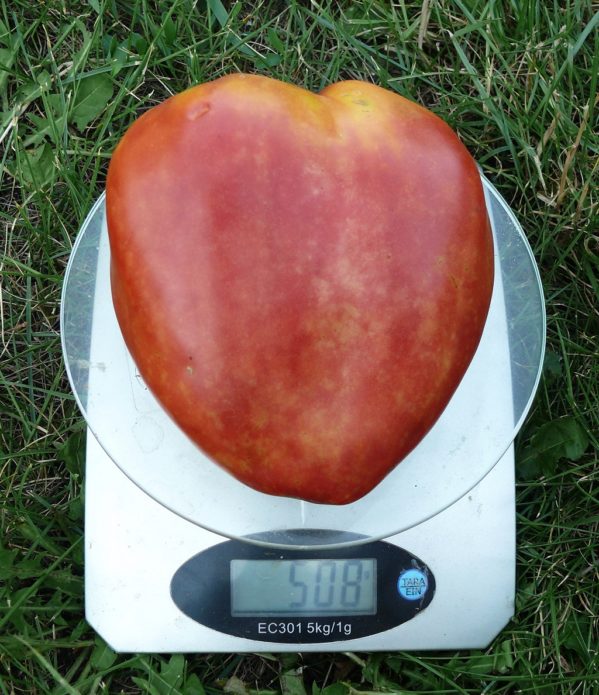
I managed to grow a Bull Heart weighing 508 g, but this is far from a record, there are gardeners who grow fruits almost 2 times heavier
As soon as the second fruit cluster begins to set, it is time for feeding with potash or complex fertilizer with a high potassium content. Dilute potassium magnesium or potassium monophosphate according to the instructions.
From folk remedies, a daily ash infusion is suitable. It is prepared and applied in this way:
- Pour 1 liter of wood ash into a bucket of water, stir.
- Insist day, stirring occasionally.
- Filtered off.
- Water the tomatoes with plain water.
- Then pour 1 liter of infusion under each bush.
The frequency of feeding is determined by observing the tomato. Usually 4 dressings are enough per season. If the growth of the stem stops too early, fertilize with nitrogen. The following signs indicate a lack of potassium:
- drying out and then browning of the edges of the leaves;
- a small number of ovaries or chopping tomatoes;
- uneven ripening - unripe yellow "shoulders" or specks on the fruit.
Use only chlorine-free fertilizers for tomatoes, since excess chlorine in the soil leads to the death of the plant.
Foliar dressing
An economical method of fertilizing is by spraying on the leaf. Such feeding is justified if:
- the plant is just planted or damaged by a pest and the root system does not work well;
- the acidity of the soil is increased, as a result, the tomato does not absorb some substances;
- an ambulance is needed for the plant, for example, when the color falls.
In greenhouses, plants are sprayed early in the morning, in open ground - in the late afternoon. An important point: do not spray on the sheet with solutions of the same concentration as with root dressing - this will burn the leaves.
Foliar dressing is different:
- as a nitrogen foliar top dressing, a solution of urea is most often prepared (50 g per bucket of warm water);
- potash fertilizer - 1 teaspoon of crushed superphosphate in a bucket of hot water. Usually 10 liters of solution is enough to process 50-60 bushes;
- to improve fruit setting on the Bovine heart, leaf dressing with pharmaceutical boric acid (7 g per 10 liters of hot water) is widely used.
Treatments for pests and diseases
The most dangerous pest of tomatoes is the tomato scoop. This butterfly lays eggs on the underside of the leaf. After a week, caterpillars appear, which make moves in the fetus, as a result of which it rots. To prevent scoop damage, the plants are sprayed with Proteus as soon as the fruits are set.
However, it is easier to prevent tomato diseases than to cure them later. Therefore, special attention is paid to prevention. Approximately 10 days after planting in a permanent place, when the bovine heart seedlings take root, spray it with fungicides (antifungal drugs):
- copper sulfate;
- copper chloride (HOM);
- Quadris;
- Thanos;
- Ridomil Gold;
- Antracol;
- Soon.
The frequency of treatments and waiting times are indicated on the packaging of the chemical.
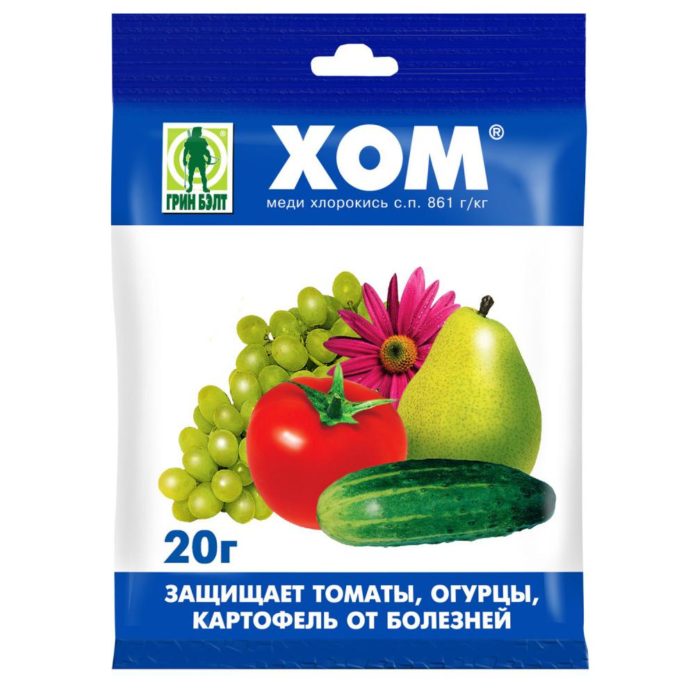
Any copper-based preparations are the most effective antifungal and antibacterial agents for the prevention and treatment of tomato diseases
A common physiological disease of tomatoes - apical rot - is characterized by the appearance of depressed or flat spots on the tips of the fruits. After a while, the stain turns black and cracks. As a result, the fruit is spoiled. For the prevention and treatment of this disease, tomatoes are sprayed with calcium nitrate (25 g per 10 l).
Usually prophylactic spraying of the Ox heart for any disease is carried out 1 time in 2-3 weeks, depending on the weather.
Variety reviews
I liked the beef heart tomatoes for their taste. They are so fleshy, juicy. Cutting them into a salad is a pleasure. And for the winter you can cook a salad from them. But the whole fruit will not get into the jar. They grow quite large. There is not much tomato on the bush itself, that is, it is not sprinkled with tomatoes. The bush is already bending under the weight of these heroes. Tomato bushes Bovine heart require care. These tomatoes must be tied up, otherwise they will simply break under the load of their fruits. And they also require pinning. Despite the fact that there is a lot of work with them, I recommend these tomatoes for planting. The taste will be your reward.
Bovine heart is my favorite tomato variety. I love him for the delicious, meaty fruits. Seedlings always quickly take root and grow. I respect him for a small amount of greenery. Its bushes do not shade its neighbors, it is not necessary to often pick off excess leaves. But many large fruits are tied. Most often I plant a pink bull heart variety. But the red is also good. This year I tried to grow an Orange Bull Heart. Sweet taste and dietary qualities. It is recommended for people with high stomach acidity. I use the bovine heart fresh and in preparations - lecho, winter salads.
Bovine heart is probably the most popular variety of large tomatoes among Russian gardeners. The tomato is tall, requires shaping and garter. Depending on the selection lines, the Bovine Heart differs from manufacturer to manufacturer. I'll tell you about the seeds from the company "Aelita". I like Aelita's Bull Heart the most, the tomatoes are larger, aligned in size, shape and sweeter than, for example, in Gavrish or SeDek. The average size of tomatoes is from 260-320 grams, when formed into 1 stem, you can catch up to 400 grams. But these tomatoes often crack and bend the water branches with their weight. For me, the ideal size of a Bull Heart is 300 g, just to make a salad for one person. The disadvantages of the Bovine Heart are weak immunity and low resistance to late blight. Under any growing conditions, treatments, watering and feeding, against the background of other varieties and hybrids, the bull's heart is the most sick. I notice the onset of late blight on this particular variety, as soon as the fungi crawl out of the soil a little, and the Bull's heart will get sick first. Moreover, after treatment, most likely, it will continue to hurt, already less, but still will not be cured to the end. Therefore, the lower leaves and a couple of fruits from the bush have to be destroyed.
A good variety, of the shortcomings can only be that which does not have time to ripen. Recently, I have been trying to plant early ripening ones, since the summer has become impossible to predict. There was a flood last year, and it rained and poured.But the husband loves this particular variety! I pick green, and the houses ripen perfectly. The fruits are large, but not for salting, very tasty for salad. The main thing is to feed the seedlings on time and after planting do not forget to feed them. These tomatoes love to eat well! Good harvests to everyone!
I grew a Bovine Heart two seasons ago. Indeed, the fruits become much smaller after the 2nd hand. Of course, the tomatoes are excellent, but low-yielding. I switched to an analogue of the Bull's Heart - Cardinal from Gisok. Also large, raspberry, in the form of a heart, breeders call it an improved Bovine heart. I liked the variety, this year I will plant both my own seeds and purchased ones. In my experience, uneven watering or untimely heavy rainfall is the main reason for cracking. Drip irrigation and greenhouse are probably the best remedies to avoid this problem. I grow everything in the open field, so if the rains charge, pink tomatoes will suffer.
For many years I have been planting this tomato variety in a greenhouse. I soak the seeds in early March. The branches grow very long, so in advance you need to prepare sticks of about 80 cm for the garter. If the seedlings bloom before I transfer them to the greenhouse, then such flowers must be cut off. In mid-May, my seedlings move to a greenhouse. Then you should not forget to cut off the stepsons. The harvest is very large. The fruits are large, fleshy, sweet, I would say, sugary, in shape they really resemble a small bovine heart. The harvest depends on the quality of care. They are very good in any salad and in preparations, except for pickling.
Now it is difficult to remember when Oxheart tomatoes appeared on our backyard plots. Large, juicy, sugary - they are such for all gardeners. Fruits grow up to 400 grams, suitable for salads. A popular and very productive variety. On my personal plot, I planted seedlings in early June in open ground. The seedlings began well, they were not afraid of the cold of the night. So that they do not get sick with late blight, I removed the diseased leaves and watched the constant airing between the bushes. I sprayed the bushes twice with microelements. I harvest seeds for the next season from the largest specimens that have ripened on the bushes. But after 3-4 years, the seeds need to be renewed so that the harvest is always pleasing and the labor expended is not in vain!
Caring for the Oxheart variety may seem daunting, but the effort will pay off with interest. After all, there is an opportunity to get a unique experience of ideal agricultural technology and the most fragrant sugar fruits.
